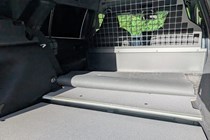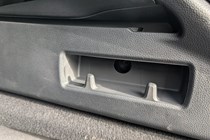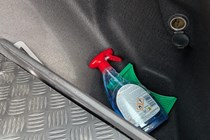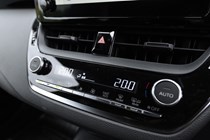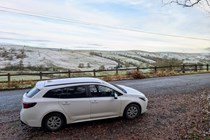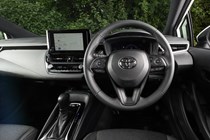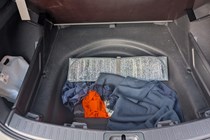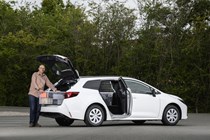How does the only estate car-based small van on the market, the Toyota Corolla Commercial, stack up in daily life? Graham King has six months to find out.
Update 1: getting acquainted
There was a time when small vans based on estates and hatchbacks were ten-a-penny. Escorts, Astras, Sunnys and Golfs with blanked back windows and no back seat. Despite the type’s former popularity, the changing van landscape has left just a single contender – the Toyota Corolla Commercial.
True to form, it’s essentially a Corolla Touring Sports estate with blacked-out rear side windows and no back seat – the back doors are still in place. The back seat has been replaced with floorboards stretching from the tailgate to a few inches shy of the front seats. The boards are coated in hard-wearing plastic and covered with a rubber mat. A mesh grille separating load bay from cab completes the transformation.
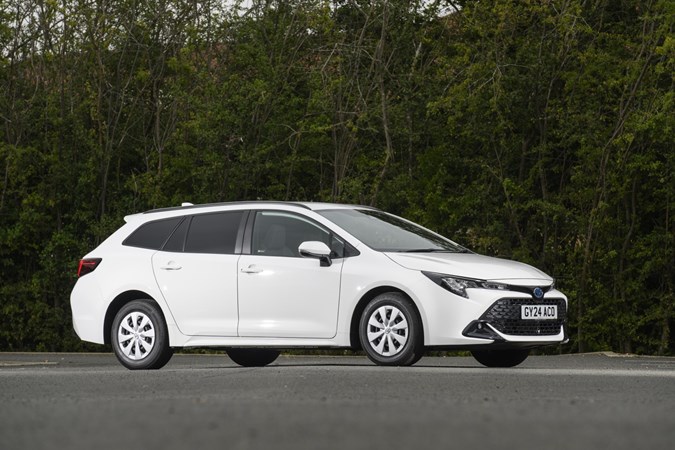
Otherwise, it’s standard Corolla fare. Power comes from a 1.8-litre petrol hybrid powertrain producing 140hp and 142Nm of torque. That translates to a less-than-sparkling 0-62mph time of 11.1 seconds but, more relevantly, the WLTP figures show average fuel economy of 61mpg is possible.
Over the next six months, I’m going to put the Corolla Commercial through its paces, finding every opportunity to load it up to the brim and covering a lot of miles. Hopefully by the end of my time with it, I’ll be able to answer a question that’s nagging at me: what, exactly, is the point of the thing when the brilliant Ford Transit Courier is cheaper and more useful?
First impressions
This Toyota Corolla Commercial is my first long-term test car. Or van. Or car-van. I’d spent the previous two years in happy ownership of an F10-generation BMW 520d Touring, a very fine thing. First impressions of seeing the Corolla Commercial in the Parkers car park are… underwhelming. It’s washing machine white and wears plastic wheel covers, just like half the taxis in my hometown – taxi drivers love their Corolla estates. The interior is a sea of hard, grey plastic, as well.
But let’s take aesthetics out of the question. How does it shape up as a practical proposition? My first concern is always interior storage. No vehicle ever hits every mark, but the Corolla Commercial starts strong, having a little shelf for your phone in front of the gear lever. My sunglasses loop neatly round the gear lever (my preferred solution), the glovebox is large, the cupholders convenient and the under-armrest cubby is useful.
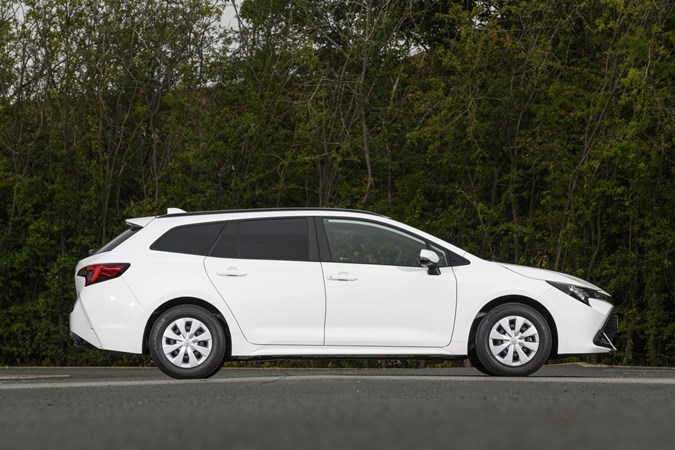
But there’s nowhere to put the keys. Or, for that matter, a clipboard or stack of job sheets. That would have to sit loose of the passenger seat – hardly ideal. At least my phone syncs with the infotainment system in seconds and it’s immediately apparent how to operate the Corolla’s main features and functions.
What about the load bay/boot? It’s a pretty good size, measuring 1,558mm long, 682mm deep and up to 1,430mm wide. That’s a total volume of 1.3 cubic metres and the payload is a not inconsiderable 465kg. The first section of floor lifts up to reveal the empty spare wheel well, which I’m using as extra storage space. There are a couple of pockets to the side of the floorboards, as well.
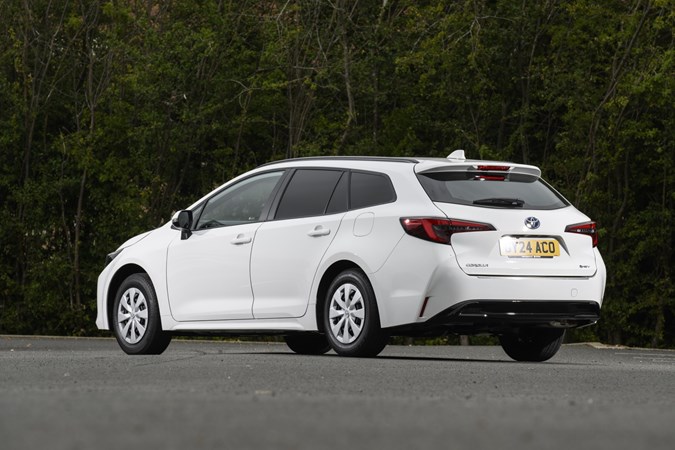
Before setting off, I immediately disable the lane departure warning and speed limit warning, both easily done from the steering wheel. Toyota’s lane departure system isn’t especially intrusive, but I find it irksome in any vehicle. The speed limit warning is a bit hyperactive for my liking, sometimes sounding before you reach the speed limit.
From behind the wheel, the Corolla Commercial feels exactly like the Corolla Touring Sports it’s based on. It’s an absolute doddle to drive. The steering’s light and accurate, the CVT isn’t annoying, it’s extremely comfortable. It’s going to be interesting to find out how I get on with it.
Update 2: miles and miles… and miles
I did 17,000 miles in my own car in 2023, and I believe I’m already well past that between the various cars I’ve had custody of thus far in 2024. It comes with living over 100 miles away from the office (I go at least once a week) and going to things far from home at weekends. So I’ve done well over 2,000 miles in just the first month of my time with the Toyota Corolla Commercial.
That includes half-a-dozen commutes from Yorkshire to the office, a couple of schleps down to the Midlands and a daytrip to London. I’ve rarely been so comfortable and relaxed covering big mileage. The Corolla’s seats are soft yet supportive, the ride is buttery smooth over all but the worst surfaces.

I live in a town that actually has the worst road surfaces I’ve ever encountered. Utterly ruined, they are. In every other car I’ve driven, they feel like the proverbial ploughed field. But the Corolla just floats over them. Yet body control is perfectly good, and the car feels resolutely tied down. The Corolla gave not a single moment of concern in the heinous weather driving back from London, even when I hit huge rivers running across the road.
I haven’t yet had the chance to truly test the Corolla’s commercial vehicle credentials, but it swallowed my partner’s bike easily. We had to take the front wheel off, but that’s to be expected. I’ve offered fetching and carrying services to all and sundry, so I’ll hopefully be able to see how it copes with a full load in the near future.
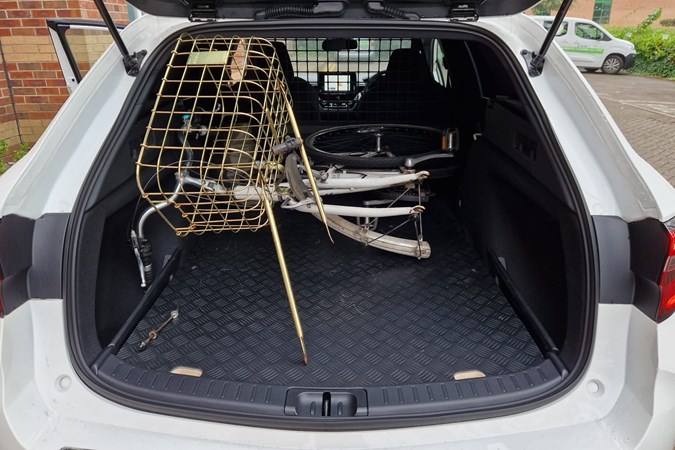
Irritations emerge
While there’s much to like about the Corolla Commercial, there are a few things that take the shine off the experience. The phone shelf that appears so convenient at first has a pretty fundamental flaw. The shape of the moulding covers a central charging port, which my phone has, so you can’t plug it in there. The infotainment system now refuses to connect to Android Auto – I must book it into a service centre to have that investigated. And it turns out you need a subscription for the satnav.
Then there’s the powertrain. The engine can function as a generator, feeding electricity into the hybrid system’s battery. It usually does so when you back off the throttle at high speed. That’s great in principle, but generator mode causes the revs to spike up to the top of the range, at which point engine noise is unpleasantly loud and there’s a strong vibration through the pedals.
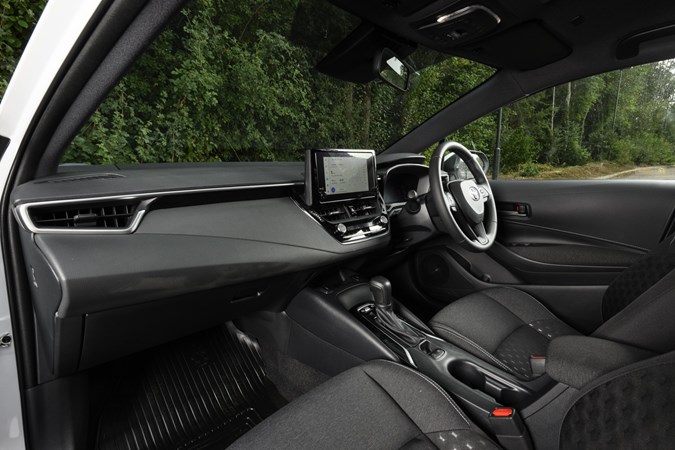
The regenerative braking cuts in and out at random, as well, which doesn’t help slowing down smoothly and consistently. When it gets its act together, though, I have found it possible to slow down from 70mph to a near stop in fairly short order without touching the brakes.
Fuel economy
Those irritations could be make-or-break for a lot of people. But I can overlook them when the Corolla Commercial is comfortably averaging well over 50mpg, sometimes over 60mpg. That’s much better fuel economy than I was expecting, considering the vast majority of miles I do are on motorways. Around town, it might be possible to exceed 70mpg.
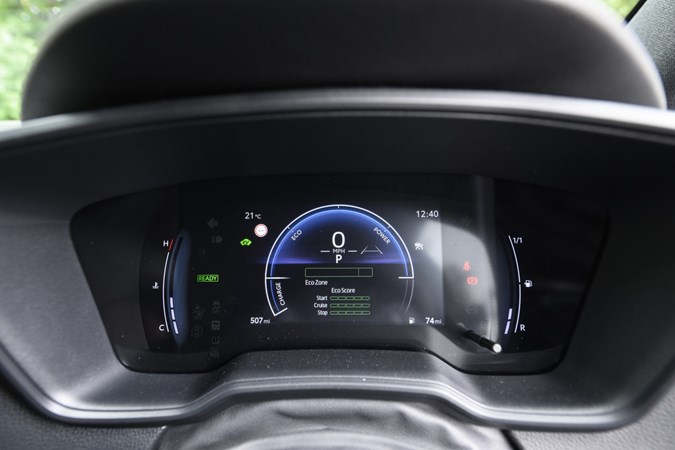
As such, I’m getting around 400 miles of range from the 35-litre thimble of a fuel tank. Which has caused an unexpected issue. I’ve got a voucher for double Nectar points if I spend £45 on fuel, but the Corolla doesn’t take that much!
Update 3: a cracking time
After clocking up over 3,000 miles in my first five weeks with the Toyota Corolla Commercial, I decided it was time for a rest. My calendar has been pretty much empty since the start of October, so there wasn’t really anywhere to go, anyway. But the rest was kind of enforced when I spotted an enormous crack in the Corolla’s windscreen.
I’ve no idea what caused the crack. The Corolla had been sat in a gravel car park that day, but there were no obvious signs of impact. Regardless, it wasn’t safe to drive, so went back to Toyota’s press garage to have a new ‘screen fitted. I was furnished with a top-of-the-range Corolla Touring Sports to drive while the Commercial was away, and it made for an interesting comparison.
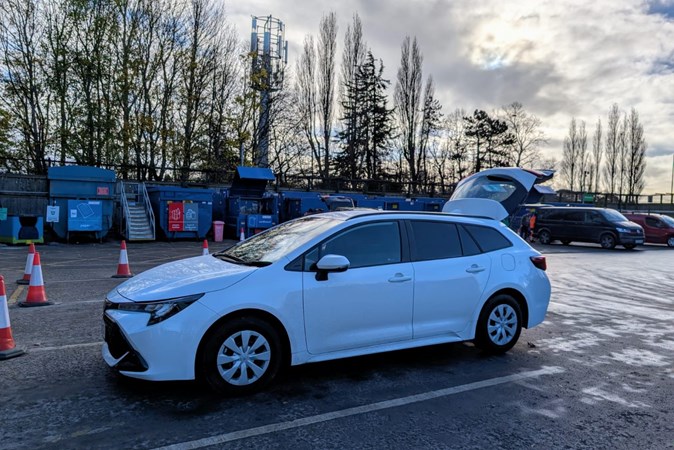
In Excel spec, the Touring Sports has a lot more gadgets than the bone-stock Commercial, but its interior is fundamentally the same. I found a few plusher materials dotted about the place; the main difference was the deeper seats. Deeper, but not necessarily any more comfortable than those in the Commercial, at least not for my back. Which shows how good the Commercial’s seats are.
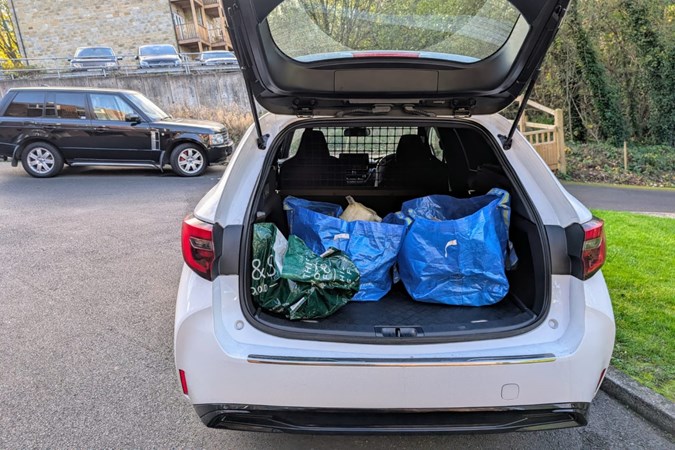
Similarly, the Corolla TS wasn’t really any more refined. Really concentrating, there were a few decibels less ambient noise, but not enough to make a significant difference to long-journey comfort. That there was no obvious way of turning off the lane departure or speed limit warning was a huge black mark, though. I could live with the former, less so with the latter and I restored to turning up the volume to drown it out – no hardship with the JBL-branded stereo.
Passenger rides and tip runs
The Corolla Commercial returned after a couple of weeks looking good as new. Whatever caused the issues connecting to Android Auto had also been solved, most likely by dint of my having a new phone. A trip out was in order.
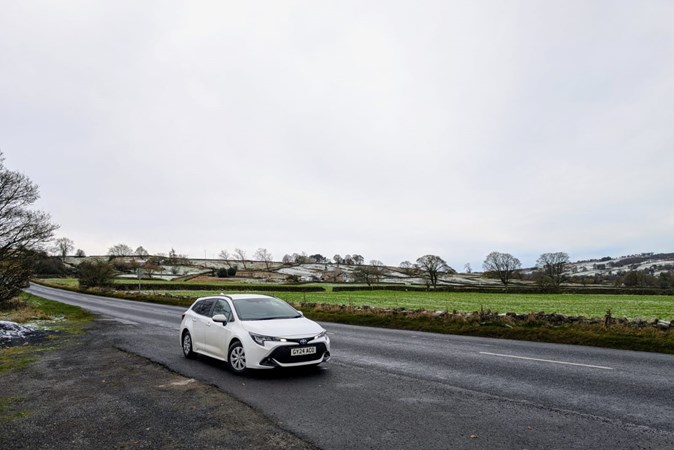
My partner is a demanding passenger. She has sensory issues and often feels distressingly cut-off from the outside world in modern cars. She also struggles to get comfortable in the seat. But she hasn’t had any complaints about the Corolla Commercial on those fronts. The passenger seat suits her shape. and the relatively vocal engine makes her feel in touch with what’s going on. She is, however, as bothered as me about the lack of cabin storage, and that the bulkhead prevents reaching into the back.
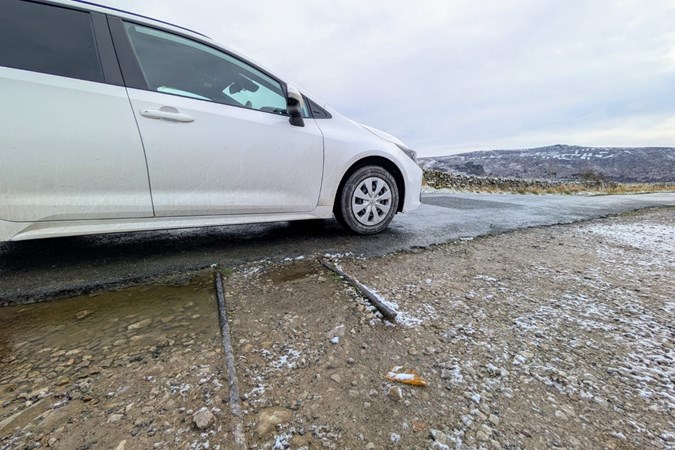
A garage clear out necessitated taking several big bags of junk to the tip. I slung them into the back of the Corolla without any thought – not possible even in a big estate. However, I could have done with more space around the bags to sort out the various materials whilst I was at the tip. I realised I hadn’t taken the Corolla around my road test route in the Yorkshire Dales. So, naturally, I chose the day we got the first winter snow. The roads weren’t icy but were sopping wet in places. The Corolla displayed its excellent traction and stability, it has pretty good overtaking poke as well. But there is not a trace of engagement to be found.
Update 4: adaptive cruise control annoyances
The Toyota Corolla Commercial has continued to provide quiet, relaxing transport since the last update. Whilst racking up the miles, I’ve been thinking about some facets of using it everyday that might appear inconsequential but actually make a big difference to the experience.
Many modern vehicles are difficult to make a quick getaway in. Let’s say you want to turn the heating on. It’s controlled through the infotainment system touchscreen, so you have to wait for it to boot up. Then it takes a few beats for the aircon icon to respond, in which time your phone connection kicks in and the screen switches to Android Auto. This may be based on recent experience with another car.
There’s none of that faff in the Corolla. There are buttons and knobs for the aircon, the infotainment loads almost immediately, you can easily turn off the somewhat annoying lane keeping assist and speed limit warning from the steering wheel. And that means you can just get in and go, something that’s becoming increasingly difficult in many cars.
But there are annoyances, like the adaptive cruise control – a standard feature on Toyota’s entire UK vehicle range. In fairness, I never like adaptive cruise. I like to be in full control of how fast the vehicle is going; I don’t really like the speed being determined by a computer.
Here’s an example of the kind of thing adaptive cruise control does that I find really annoying. You come up behind a vehicle going 10mph below the speed limit. The Corolla starts slowing down several hundred yards away (too far). You get to within 100 yards of the vehicle, still closing in. You go for a gap in the right-hand lane. You should accelerate into it, but because you’re still partly behind the vehicle you’re overtaking, the Corolla keeps slowing down. Then, when you’re fully in the right-hand lane, it takes several seconds for the computer to realise and start accelerating.
This scenario has played out with every adaptive cruise control system I’ve used – it’s not just the Corolla. It’s absolutely fine on a mostly clear run, but it makes maintaining smooth, swift progress in even slightly heavy traffic really difficult. So, most of the time, I don’t bother with it. It creates stress in an otherwise largely stress-free vehicle.
Update 5: practical considerations and economy concerns
I’ve been looking at the layout of the Toyota Corolla Commercial’s loadbay, finding all the little features that may or may not help make its case as a working vehicle.
Let’s start with the loadbay’s dimensions. I measure these things in units of Ikea Kallax shelving flat packs. A 4×2 compartment Kallax unit comes in a package 1500mm long, 410mm wide and 160mm tall, so you can comfortably put two stacks of four side-by-side in the Corolla Commercial’s 1,558mm x 952mm x 682mm rear. That adds up to a total weigh of 176kg (22kg per pack), well within the 465kg payload limit.
But what if you’ve got smaller, more awkwardly shaped loads that need strapping down? There are six tie-down loops at floor level, two by the bulkhead, two just aft of the rear doors and two at the boot opening – the latter are difficult to get at.
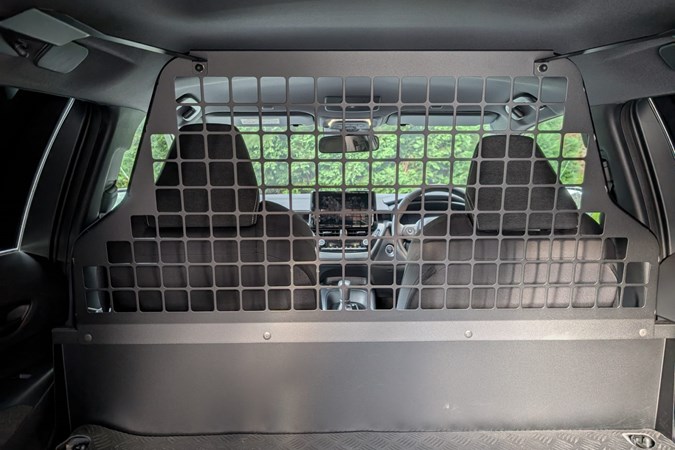
There are also some features carried over from the boot area of Corolla Touring Sports estate that the Commercial is based on. There are a total of four hooks moulded into the boot side trim. There are two bins behind the rear wheelarches that I’ve been keeping deicing equipment in – there’s a 12-volt socket in the right-hand one, as well.
There are some other bits of the mouldings where the back seat would have been that could serve as attachment points, as well, as could the bulkhead’s grille. By far the sturdiest, though, are the metal loops that the absent back seat rest locks onto. They’re an integral part of the vehicle’s structure and designed to withstand massive forces in a crash, so they’ll have no trouble stopping a load moving about.
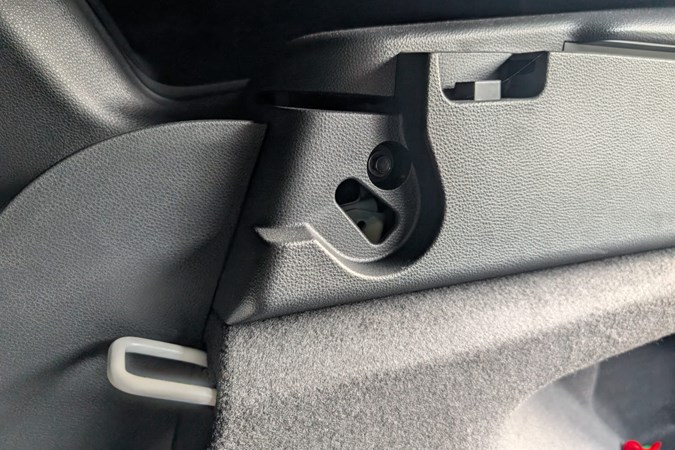
But there’s a big annoyance in the loadbay design. The section over the spare wheel well lifts up so you can use the area below as extra storage – which I do. It fits into a slot on the forward section and pops out easily, unless you’re very careful. Putting it back in the slot isn’t easy, either, and necessitates throwing back the rubber floor covering. It’s a monumental pain. Enough to make you forget there’s no means of restraining the floor upright. If the Corolla was actually mine, I’d fix some hinges to the floor to solve the problem.

Recently fuel consumption has been less than ideal, as well. During the January cold snap, average MPG dropped from around 56mpg to 51mpg. I wasn’t driving any differently or taxing the aircon – the heated seats get roasting hot. I can only ascribe it to the temperature affecting the hybrid system’s battery efficiency, so the car was running on engine power more than normal. Now the temperature has picked up again, MPG is back to normal.
Update 6: facing the key rival
I started my time with the Toyota Corolla Commercial wondering what the point of it is when the Ford Transit Courier appears to be a superior van in every way. So, before the Corolla returned to Toyota, I got hold of a Courier to do a back-to-back comparison.
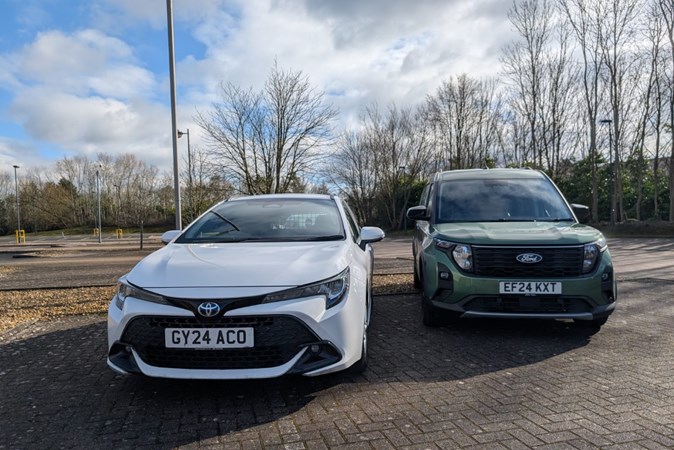
It wasn’t a surprise to find out the Courier is a better van than the Corolla by any metric. Just look at the load bay dimensions. The Corolla’s is a maximum of 1,558mm long, 952mm wide and 682mm tall; the Courier’s is 1,802mm x 1,535mm x 1,262mm. That’s big enough to fit two standard-issue Euro pallets. Payload is well over 600kg in all models, and you can specify an upgrade package to increase that to around 800kg. The Corolla manages just 465kg.

The Courier also has rear barn doors that open through 180 degrees and most models have a full height sliding side door with a very large opening. The load bay floor is higher than the Corolla’s, which is better for your back. I counted 18 storage compartments dotted around the cabin, including a full-width shelf above the windscreen, a clipboard slot in the passenger footwell and a tray for pens and other small items above the glovebox. The large-format infotainment system fitted our top-spec Active model is more comprehensive and easier to use, as well. So the Courier is a better workplace than the Corolla.

Transit Courier proves great to drive
The Courier is much better to drive, as well. The 100hp, 1.5-litre EcoBoost diesel engine fitted to our Courier is pretty gutless below 2,000rpm, but once there it easily romps along at the motorway speed limit. I found myself changing gear quite a lot just to enjoy the smooth, short shift. Surprisingly, it’s quieter than the Corolla’s petrol hybrid powertrain, as well. There’s a constant low grumble, but nothing as intrusive as the din the Corolla produces under hard acceleration.
The Courier is also available in 100hp, 1.0-litre EcoBoost petrol with manual gearbox, 125hp EcoBoost with automatic and newly launched 136hp battery-electric forms if you prefer. I should note that the Courier returned lower fuel economy than the Corolla, averaging around 50mpg to the Toyota’s 55-ish. But you can almost certainly do better if you drive like you’re paying for the fuel.
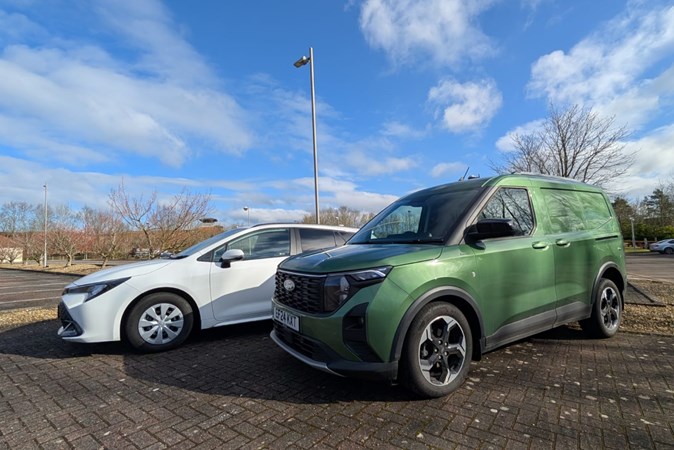
Then there’s the way the Courier drives. It chomped through a couple of hundred motorway miles feeling resolutely secure and stable, it was smooth and undemanding around town and an absolute joy on country roads. It’s based on the same platform as the Puma SUV, a car lauded for its handling characteristics – I and many colleagues think the Courier is better. There’s nothing wrong with the way Corolla drives, but when spending long days on the road, I need more than a mere conveyance.
Corolla Commercial use cases
All-in-all, the Ford Transit Courier is a much better working vehicle than the Toyota Corolla Commercial. And yet, in just the last couple of months, I’ve seen more and more of them, all been performing a very particular role. Specifically, they’ve been the vehicles used by civil engineering site managers. I’ve seen a couple at major roadworks, others at building sites, a couple in transit. That the drivers were all wearing ties and conspicuously clean high-vis jackets was the clue to their management status.
I suppose the Corolla Commercial is the ideal vehicle for the job. It has enough load space to be used for light-duty fetching and carrying, and it’ll feel like an upgrade for any managers promoted from a position that involved driving a filthy, slightly knackered [insert van name here].
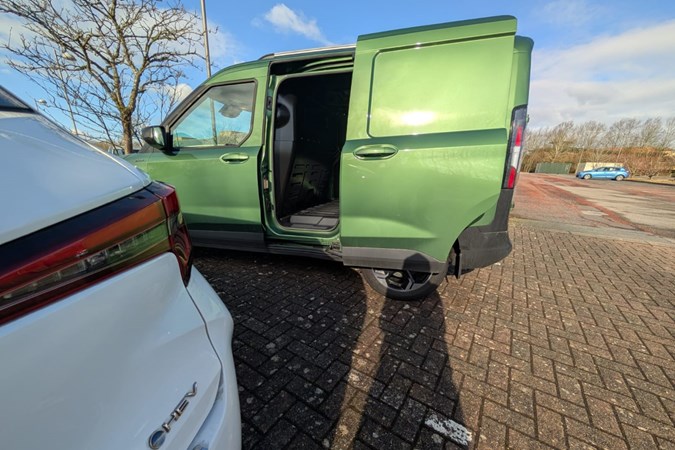
As for me? After driving the Toyota Corolla Commercial 7,955 miles in six months, I remain unconvinced. It has been an entirely undemanding vehicle to live with. It’s comfortable, mostly relaxing, has all the features you really need, it’s pleasant enough to drive and it consistently returns at least 50mpg. It has provided entirely dependable transport but I haven’t bonded with it. As a working vehicle, it does have use as a light-duty runaround, but if you need a vehicle that can work really hard for its living, there are better options.
Just so you know, we may receive a commission or other compensation from the links on this website - read why you should trust us.










